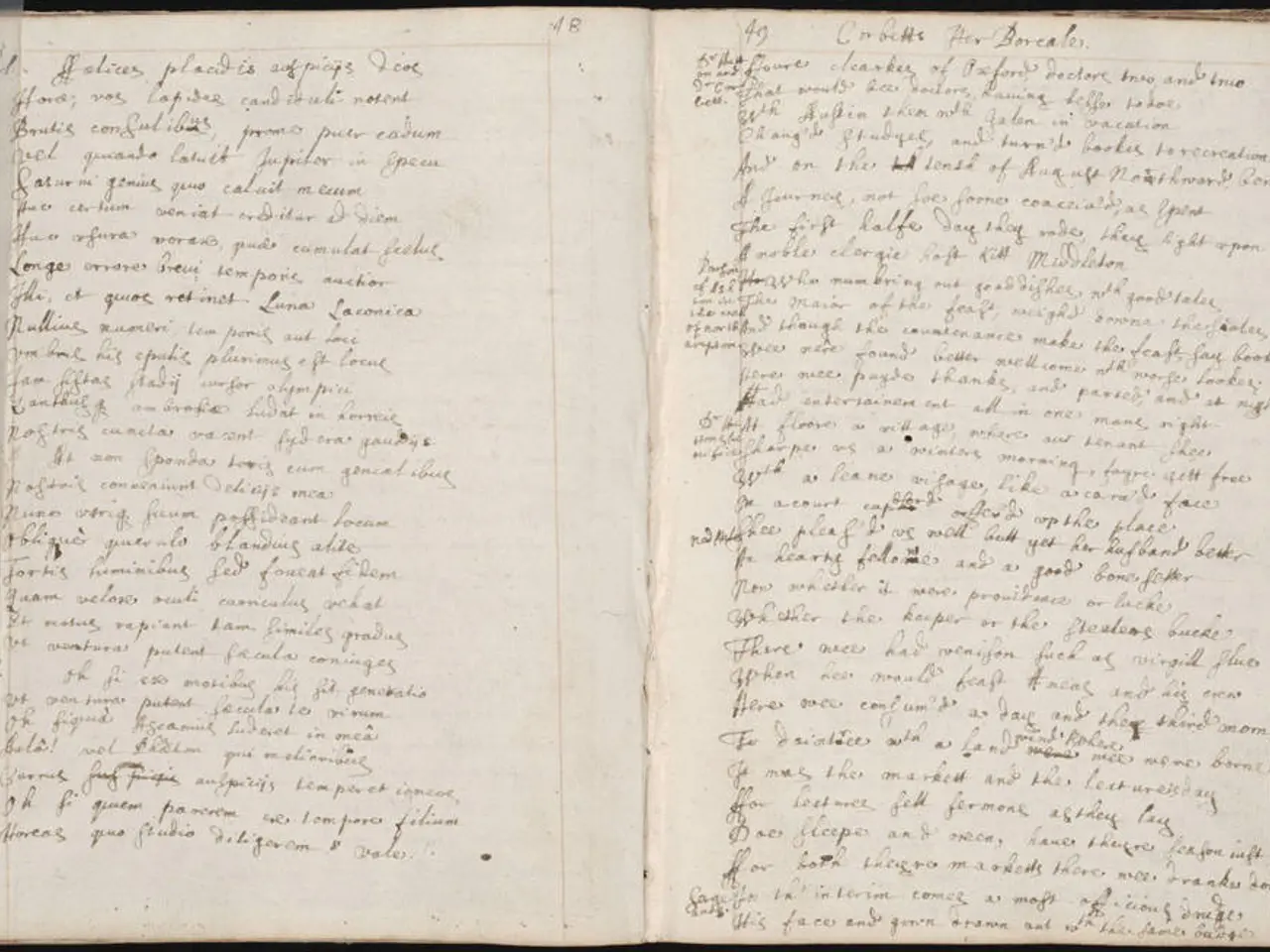Unraveling the Potency of Screenwriting: An Insight into Its Electrifying Force
================================================================
In the world of filmmaking, crafting a compelling screenplay is an art that requires careful planning and execution. To create a dynamic and engaging script, consider the key methods used by filmmakers like M. Night Shyamalan, Quentin Tarantino, and Bong Joon-ho.
Incorporate suspense, character development, dialogue, pacing, and plot twists by carefully layering subtext, managing tone and pacing, crafting purposeful dialogue, and strategically structuring plot reveals.
Building suspense through subtext and controlled information is one effective technique. Use subtext where characters say one thing but mean another, combined with loaded silences or subtle actions to hint at underlying stakes without explicit exposition. This keeps audiences invested and heightens tension by making them decode hidden motivations and conflicts.
Developing characters through their desires and complexities revealed gradually is another essential aspect. Show character growth through choices, reactions, and evolving dynamics rather than direct statements. Layer character wants into their dialogue and behavior so the audience understands their arc alongside the plot.
Writing dialogue with purpose and subtext is crucial to avoid exposition-heavy conversations that can bog down your script. Ensure dialogue does more than convey information — it should reveal personality, escalate conflict, or deepen mystery. Subtle inconsistencies between what’s said and what’s felt create emotional layers that engage viewers.
Controlling pacing by varying scene tempo and rhythm is vital for sustaining attention and creating suspenseful mood shifts. Alternate between fast-paced sequences (quick cuts, urgent dialogue, high stakes) and slower, atmospheric moments (long takes, reflective scenes).
Incorporating plot twists with careful foreshadowing and tonal shifts can re-energize the story emotionally, balancing light and dark moments for contrast and surprise. Align tonal changes with character arcs to avoid confusion and make twists credible rather than arbitrary.
Employing structural techniques to enhance engagement and suspense can layer complexity and suspense, revealing backstory or interconnected fates at key points. Non-linear narratives, real-time unfolding, or hyperlink storylines can add layers of intrigue and keep audiences guessing.
Using visual and spatial storytelling to augment suspense is another powerful tool. Blocking actors so movement ties to danger (e.g., fumbling keys while threat approaches) and using shadows, reflections, or partial reveals increases unease and anticipation beyond the script’s words.
To keep plots simple but impactful, center on a clear, engaging premise and focus on strong core elements. Identify your screenplay's central themes early on and ensure each element supports these themes for coherence and amplified impact.
Remember, your script is a blueprint for a film, not a finished product. Trust that directors and actors will interpret your script creatively. Focus on broad strokes rather than over-directing every scene.
In essence, creating a captivating screenplay is a delicate balance of suspense, character development, dialogue, pacing, and plot twists. By carefully layering subtext, managing tone and pacing, crafting purposeful dialogue, and strategically structuring plot reveals, you can create a screenplay that captivates and maintains audience engagement from start to finish.
[1] Shyamalan, M. Night. (2000). The Sixth Sense. [2] Tarantino, Q. (1994). Pulp Fiction. [3] Bong Joon-ho. (2019). Parasite. [4] [5] Various techniques can be found in numerous films, but these examples highlight some key methods used by renowned filmmakers.
- To provide engaging entertainment for viewers of movies-and-tv, ensure your screenplay has strong coverage of suspense, character development, dialogue, pacing, and plot twists, similar to the techniques used by filmmakers like M. Night Shyamalan, Quentin Tarantino, and Bong Joon-ho.
- By utilizing subtext, managing tone and pacing, crafting purposeful dialogue, and strategically structuring plot reveals, you can offer comprehensive coverage of suspense and character development in your movies-and-tv scripts, captivating audiences with dynamic and engaging content.








